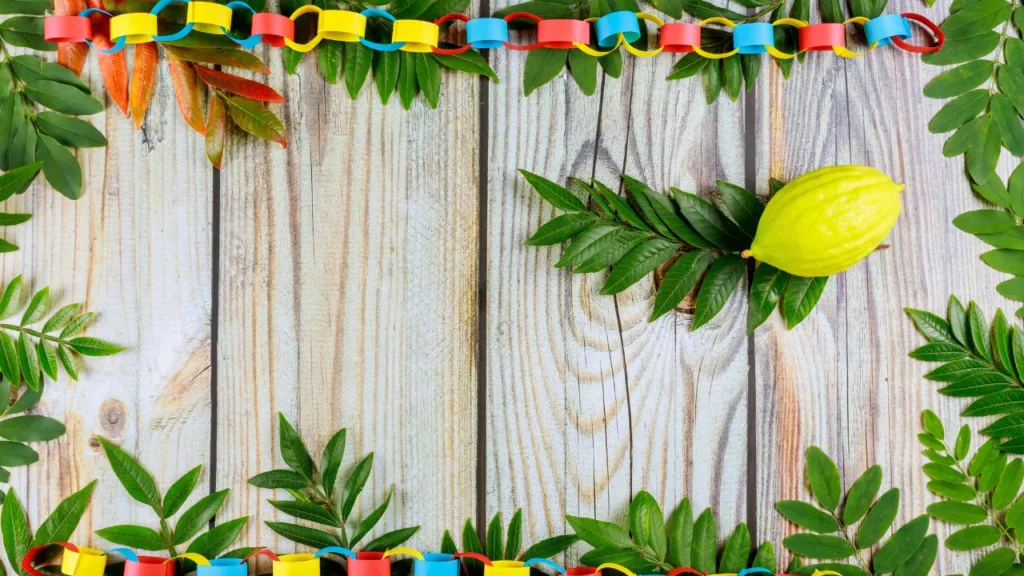When is Sukkot? | Jewish Festival | Significance | Full Guide | 2023
"Sukkot, the Festival of Booths, is a joyous Jewish holiday celebrated in the fall. Discover its timing and significance."

When is Sukkot?
Sukkot falls on the 15th day of the Hebrew month of Tishrei, which typically corresponds to September or October on the Gregorian calendar. The festival lasts for seven days, with an additional eighth day known as Shemini Atzeret (Eighth Day of Assembly) and Simchat Torah (Rejoicing of the Torah), celebrated immediately afterward.
Introduction of Sukkot
Sukkot, also known as the Feast of Booths or Tabernacles, is a significant Jewish festival celebrated with great enthusiasm and reverence. This ancient holiday holds deep spiritual and cultural significance in the Jewish tradition. In this article, we will explore the origins, customs, and the importance of Sukkot, as well as when it is celebrated.

Where did Jesus Die? | Traditional Site | 2023
Was Jesus Muslim or Christian? | Religion | 2023
Origins of Sukkot
Sukkot is one of the three pilgrimage festivals in Judaism, along with Passover (Pesach) and Shavuot. It is mentioned in the Torah, the central religious text of Judaism, in the book of Leviticus (Leviticus 23:33-43). The holiday’s roots can be traced back to the agricultural and historical contexts of ancient Israel.
When is Sukkot Celebrated?
Sukkot falls on the 15th day of the Hebrew month of Tishrei, which typically corresponds to September or October on the Gregorian calendar. The festival lasts for seven days, with an additional eighth day known as Shemini Atzeret (Eighth Day of Assembly) and Simchat Torah (Rejoicing of the Torah), celebrated immediately afterward. In the diaspora, where Jewish communities exist outside of Israel, Sukkot is observed for eight days to account for differences in the Jewish calendar.
The Sukkah: A Temporary Dwelling
A central and unique aspect of Sukkot is the construction of a sukkah, a temporary outdoor dwelling. The word “sukkah” means “booth” or “tabernacle.” According to Jewish law, a sukkah must have at least three walls and a roof made of natural materials, such as branches, leaves, or bamboo. The roof should provide enough shade to see the stars at night but allow some sunlight during the day.
The sukkah serves as a symbolic reminder of the Israelites’ journey through the wilderness after the Exodus from Egypt. During this time, they lived in temporary shelters, and Sukkot commemorates that period of wandering.
Four Species: Lulav and Etrog
Another important aspect of Sukkot is the use of the “Four Species,” which are waved during daily prayers throughout the festival. These include:
- Lulav: A bundle of palm, myrtle, and willow branches bound together. Each of these plant species has symbolic significance.
- Etrog: A citron, a type of citrus fruit, often described as having a sweet fragrance. It represents the heart.
- Hadas: Myrtle branches, which have a pleasant fragrance and represent the eyes.
- Aravah: Willow branches, which have no fragrance and represent the lips.
The waving of the Four Species is accompanied by special blessings and prayers, signifying unity and the harvest season.
What is Sukkot?
Sukkot, also known as the Feast of Booths or Tabernacles, is a Jewish festival celebrated to commemorate the Israelites’ journey through the wilderness and the harvest season. It involves building and dwelling in temporary outdoor shelters called sukkahs.
When is Sukkot celebrated?
Sukkot is celebrated on the 15th day of the Hebrew month of Tishrei. This typically falls in September or October on the Gregorian calendar.
Why does the date of Sukkot vary from year to year?
Sukkot follows the Hebrew lunar calendar, which is different from the Gregorian solar calendar. As a result, the dates of Jewish holidays, including Sukkot, change each year in relation to the secular calendar.
How is the start date of Sukkot determined?
Sukkot begins on the 15th day of Tishrei by counting from the start of Rosh Hashanah, the Jewish New Year, which falls on the first and second days of Tishrei.
How long does Sukkot last?
In Israel, Sukkot is celebrated for seven days. However, in the diaspora (Jewish communities outside of Israel), it is observed for eight days. The eighth day is known as “Shemini Atzeret,” and it is followed by “Simchat Torah.”
Sukkot Customs and Traditions
- Sukkah Meals: Families and communities come together to eat meals in the sukkah during Sukkot. It is customary to invite guests to share in the joy of the holiday.
- Ushpizin: Some Jewish traditions include inviting symbolic “guests” into the sukkah, representing historical figures and biblical ancestors.
- Hakafot: During Simchat Torah, celebrants dance with Torah scrolls in the synagogue, rejoicing in the completion and beginning of the annual Torah reading cycle.
- Water Drawing Ceremony: This tradition, known as Simchat Beit Hashoevah, involves drawing water from a well or other natural source and pouring it on the altar during Sukkot celebrations at the Temple in Jerusalem.
The Spiritual Significance of Sukkot
Sukkot is a time of spiritual reflection and connection with both nature and Jewish history. The sukkah reminds us of the impermanence of life and the importance of humility before the divine. It’s a reminder that our material possessions and comforts are temporary, and our ultimate trust should be in God.
The waving of the Four Species symbolizes the unity of the Jewish people and the blessings of a bountiful harvest. Each element represents a different aspect of the human condition, emphasizing the importance of diverse perspectives and experiences within the community.
Conclusion
Sukkot, the Feast of Booths, is a beautiful and meaningful holiday in the Jewish calendar. It combines historical remembrance, agricultural celebration, and spiritual reflection. Building and dwelling in the sukkah, waving the Four Species, and coming together as a community are integral parts of this festival. Sukkot reminds us of our connection to nature, our shared history, and the importance of gratitude and humility in our lives. It is a time of joy, reflection, and unity for Jewish communities around the world.
What is the significance of building a sukkah during Sukkot?
Building a sukkah is a central tradition of Sukkot. It symbolizes the temporary dwellings that the Israelites used during their journey in the desert after leaving Egypt. It serves as a reminder of the importance of humility, gratitude, and dependence on God.
What are the “Four Species” used during Sukkot?
The “Four Species” include the Lulav (a bundle of palm, myrtle, and willow branches) and the Etrog (a citron fruit). These are waved during special Sukkot prayers and symbolize unity, diversity, and the harvest.
Are there specific customs and rituals associated with Sukkot?
Yes, there are many customs and rituals associated with Sukkot, including dwelling and eating in the sukkah, reciting blessings over the Four Species, inviting guests, and engaging in joyful celebrations. Each of these customs adds depth and meaning to the holiday.
Is Sukkot a joyful holiday?
Yes, Sukkot is often referred to as “Zman Simchateinu,” which means “the time of our joy.” It is a time of rejoicing, gratitude, and communal celebration.
Can people of all Jewish backgrounds and denominations celebrate Sukkot?
Yes, Sukkot is a universal Jewish holiday celebrated by Jews of all backgrounds and denominations. It is a time for unity and coming together as a community to celebrate the shared heritage and traditions of Judaism.





